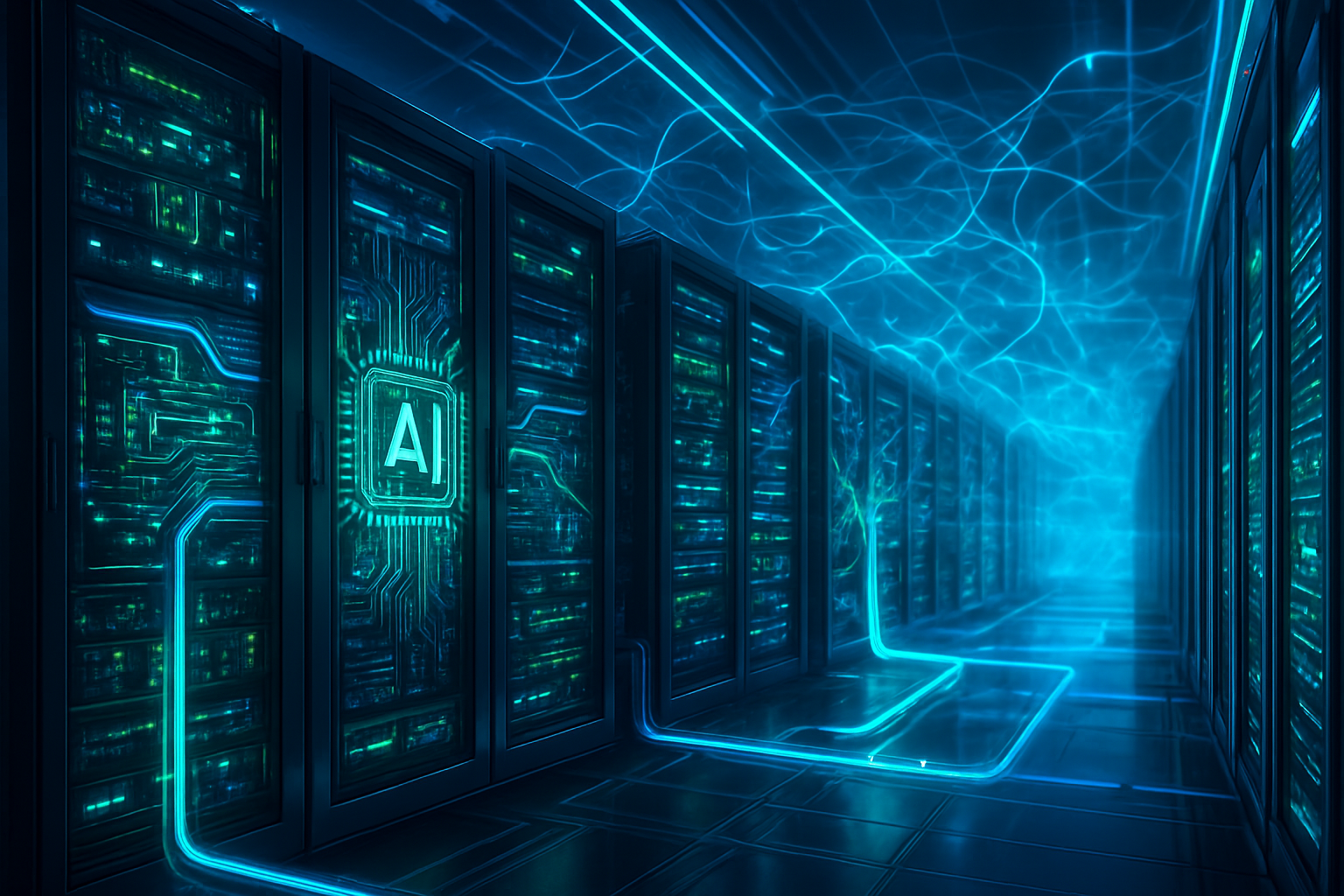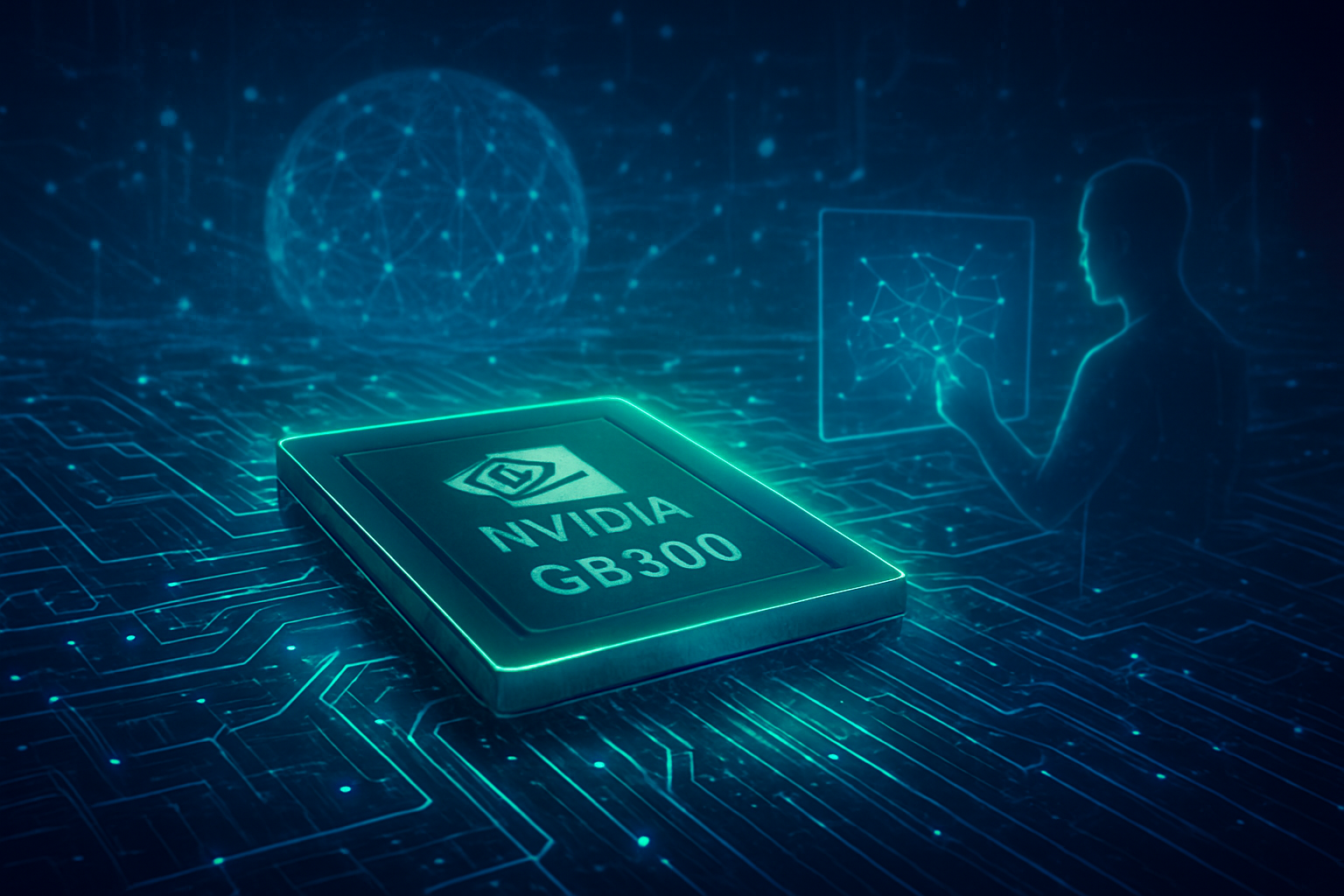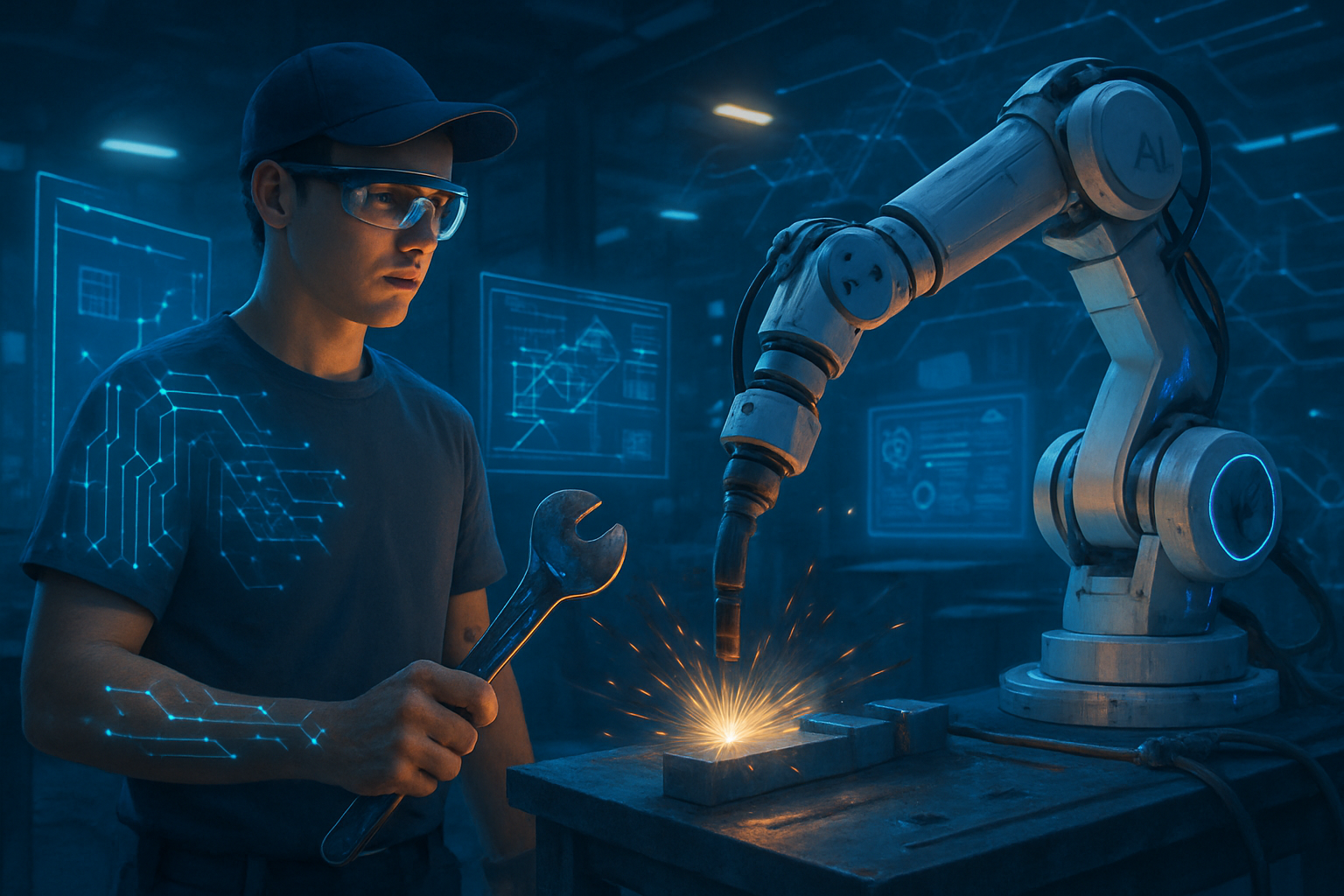The landscape of artificial intelligence is experiencing an unprecedented acceleration of innovation and competition as late 2025 draws to a close. At the heart of this technological arms race are two titans: OpenAI's ChatGPT series and Google's (NASDAQ: GOOGL) formidable Gemini 3. Recent developments, including Google's aggressive launch of Gemini 3 and OpenAI's reported internal "code red" to defend its market leadership, signify a dramatic escalation in the battle for AI supremacy, promising transformative shifts for the tech industry and society at large.
This intensifying rivalry is not merely about incremental improvements but a race towards truly autonomous and intelligent AI agents. With both companies pushing the boundaries of multimodal understanding, advanced reasoning, and agentic capabilities, the immediate significance lies in the rapid evolution of what AI can achieve. The stakes are immense, as the victor stands to define the future of human-computer interaction, enterprise solutions, and a myriad of consumer applications, driving both immense profit and profound societal change.
The Dawn of Autonomous AI: Gemini 3's Leap and ChatGPT's Evolution
Google's Gemini 3, officially launched in mid-November 2025, represents a significant leap forward, characterized by its advanced autonomous reasoning and execution capabilities. Positioned as an intelligent partner rather than a mere chatbot, Gemini 3 is designed to manage complex, multi-step processes with minimal human intervention. Its native multimodality allows it to seamlessly process and synthesize information across text, images, code, audio, and video within a single transformer stack, offering a unified and comprehensive understanding of diverse inputs. Google CEO Sundar Pichai heralded Gemini 3 as a "transformative leap" at Dreamforce 2025, highlighting its immediate integration across Google's search engine and the Gemini app, underscoring Google's intent to rapidly scale its AI offerings and bolster its profit-generating products.
Technically, Gemini 3 has reportedly surpassed OpenAI's GPT-5.1 on several critical benchmarks. It achieved a score of 1324 on "Humanity's Last Exam" and 1501 on LMArena, outperforming GPT-5.1's 1220. These scores underscore Gemini 3's purported "PhD-level reasoning capabilities," particularly in coding, math, and science. Salesforce CEO Marc Benioff publicly lauded Gemini 3's speed and superior reasoning, even switching from ChatGPT to the new Google model. This aggressive push and impressive benchmark performance suggest a strategic move by Google to challenge OpenAI's perceived lead in foundational AI research and application.
OpenAI (NASDAQ: OPENA), while facing this formidable challenge, has also continued to evolve its ChatGPT offerings. The GPT-5 series, including GPT-4o and the anticipated GPT-5, moved beyond simple text generation to understand images, reason deeply, and perform complex tasks. Pro users gained access to GPT-5 in mid-August 2025, with wider availability in early September. The subsequent release of ChatGPT-5.1 in November 2025, just before Gemini 3's launch, focused on a "warmer, more conversational" experience with enhanced instruction-following. This model also boasts advanced multimodal capabilities and "adaptive thinking," dynamically adjusting processing time based on query complexity.
However, despite these advancements, the competitive pressure is evident. OpenAI CEO Sam Altman reportedly declared an internal "code red" in early December 2025, prioritizing improvements to ChatGPT's speed, reliability, and personalization. This directive has also fast-tracked the development of a new large language model, internally codenamed "Garlic" (potentially GPT-5.2 or GPT-5.5), aimed specifically at countering Google's gains in coding and reasoning. While ChatGPT-5.1 demonstrated strengths in mathematical reasoning and coding logic, offering intuitive solutions for precision-focused tasks, challenges remain. A recent study highlighted concerns about accuracy, finding that one in five ChatGPT citations were fabricated, and over half contained errors, a critical area for improvement as AI agents move towards autonomous operation.
Competitive Landscape Reshaped: Who Benefits and Who Faces Disruption
The intensifying rivalry between Google's (NASDAQ: GOOGL) Gemini 3 and OpenAI's (NASDAQ: OPENA) ChatGPT is profoundly reshaping the competitive landscape of the AI industry, creating clear beneficiaries, strategic advantages, and significant disruptions for tech giants and startups alike. Google, with its vast ecosystem, stands as an immediate and significant beneficiary of Gemini 3's advanced capabilities and aggressive integration strategy. Launched on November 18, 2025, Gemini 3, with its multimodal understanding, state-of-the-art reasoning, and agentic functionality, has rapidly climbed industry leaderboards, achieving a 1501 Elo on LMArena and high benchmarks on tasks like GPQA Diamond (91.9%) and SWE-bench Verified (76.2%). Its "Deep Think" mode further solidifies its position in complex problem-solving.
Google's strategic advantage lies in the deep integration of Gemini 3 across its expansive product portfolio. Embedded in Google Search (via AI Mode), the Gemini App (offering full Pro access), and enterprise platforms like Vertex AI and the new agentic development platform Google Antigravity, Gemini 3 leverages Google's existing user base of 93% market share in search and 73% Android OS penetration. This pervasive integration is designed for rapid adoption, with Gemini app downloads already surpassing ChatGPT in global app stores by September 2025. Salesforce CEO Marc Benioff's public endorsement of Gemini 3's "sharper and faster" performance further underscores its immediate market impact, directly bolstering Google's market position and stock value.
OpenAI, despite maintaining a significant overall market share in the generative AI chatbot space (around 80% as of late 2025, with 800 million weekly active users), faces mounting pressure. The "code red" declared by CEO Sam Altman signifies a pivotal moment, forcing OpenAI to prioritize immediate improvements to ChatGPT's speed, reliability, and personalization. This strategic pivot has led to the delay of other ambitious projects, including advertising solutions and AI agents for shopping, as the company focuses on its core offerings and the development of a counter-model ("Garlic"). OpenAI's strategic alliance with Microsoft (NASDAQ: MSFT) continues to provide access to massive cloud compute infrastructure and integration into Microsoft products, while its focus on platformization aims to transform ChatGPT into a central hub for application hosting and agent-based workflows.
Beyond the two main contenders, other tech giants are also adapting their strategies. Anthropic, with its Claude family of LLMs, is positioning itself as a strong enterprise player, targeting $9 billion in annualized revenue by the end of 2025, primarily from enterprise customers. Its Claude Sonnet 4.5, released in September 2025, boasts state-of-the-art coding performance, and Anthropic's unique strategy of offering Claude for Enterprise and Government for $1 per agency aims for deep embedded adoption, emphasizing safety and robust guardrails. Microsoft, a major OpenAI investor, is evolving into an "agentic AI platform," transforming GitHub Copilot into a full agentic development platform and integrating AI agents across Microsoft 365, managed by a new enterprise control plane, Agent 365. Meta (NASDAQ: META), while committing substantial capital expenditures to AI infrastructure and leveraging its open-source Llama series (Llama 4 launched in April 2025), faces challenges with some Llama variants underperforming competitors, alongside frequent internal restructuring of its AI efforts.
For AI startups and smaller companies, the landscape presents both opportunities and significant hurdles. The dominance of powerful foundation models like Gemini 3 and advanced ChatGPT versions compels others to specialize. Startups focusing on niche solutions, custom applications for specific industries (legal, healthcare, finance), and leveraging foundation models through APIs can thrive. The "open-weights" movement offers alternatives to proprietary dominance, providing greater control and cost efficiency. However, challenges abound: an MIT study revealed that 95% of generative AI projects never move past the pilot stage, indicating a high failure rate for building sustainable AI businesses. Startups also grapple with talent scarcity, the need for competitive delivery velocity, high computing costs, and deep-seated anxieties around security, privacy, and ethical concerns, making monetization a difficult endeavor despite significant investment.
Beyond the Benchmarks: The Broader AI Landscape and Societal Implications
The fierce competition between OpenAI's ChatGPT and Google's (NASDAQ: GOOGL) Gemini 3 is not merely a corporate battle; it is a powerful catalyst accelerating several profound trends within the broader AI landscape, ushering in significant societal impacts, and bringing critical ethical and privacy concerns to the forefront. This rivalry is driving the rapid evolution towards truly autonomous AI agents, making multimodality a mainstream expectation, and fundamentally blurring the lines between traditional search engines and intelligent AI assistants.
A defining trend fueled by this competition is the decisive shift towards autonomous agents. The AI world is moving beyond systems that simply respond to prompts to those that can initiate, make decisions, and complete multi-step tasks with minimal human intervention. Industries like finance, HR, and customer service are rapidly adopting these agentic AIs, with projections suggesting 75% of customer service operations could be automated by AI agents by 2025. OpenAI's "Operator" agent, designed to automate complex computer tasks from coding to managing travel plans, exemplifies this paradigm shift, while Google's Gemini 3, with its advanced execution capabilities, is also a key player in this burgeoning market, projected to reach $127 billion in 2025.
Concurrently, multimodality—the ability of AI to seamlessly process and generate information across various data types like text, images, audio, video, and code—is rapidly becoming the dominant paradigm. This capability allows AI systems to mimic human perception more closely, leading to smarter automation and analysis across diverse sectors, including healthcare, finance, and retail. Leading models like Gemini 3 and OpenAI's GPT-5 series are showcasing increasingly sophisticated multimodal understanding, setting a new standard for what users expect from AI interactions. This technological advancement is transforming how information is consumed and created, making AI more intuitive and versatile.
Furthermore, the lines between traditional search engines and AI are increasingly blurring. Users are gravitating towards LLMs like ChatGPT and Perplexity for complex, nuanced questions, seeking synthesized, context-aware answers rather than just lists of links. This evolution means that search engines are transforming into intelligent assistants, offering AI-generated overviews and personalized results. Google is strategically integrating Gemini AI directly into its search experience, aiming to bridge the gap between traditional and AI-native search, a move that could redefine how billions access information daily.
However, these rapid advancements bring significant societal challenges. While highly capable AI agents promise to revolutionize daily life and workflows, enhancing productivity across coding, content generation, and personal assistance, they also raise serious concerns about economic transformation and potential job displacement. The automation of routine business processes, while boosting efficiency, necessitates a proactive approach to workforce adaptation and reskilling. Ethical and privacy concerns are also paramount. Research from 2025 indicates that platforms from large tech companies, including Google's Gemini and Meta AI (NASDAQ: META), tend to be more privacy-invasive, collecting precise locations and other personal data. OpenAI (NASDAQ: OPENA) has explicitly stated that ChatGPT conversations are not private and may be used for training, raising fears about sensitive information being inadvertently incorporated into models. The potential for algorithmic bias and the spread of misinformation, exemplified by Google's temporary suspension of Gemini's image generation feature in early 2024 due to biased outputs, highlights the urgent need for robust safety protocols and ethical guardrails. The proprietary nature and immense complexity of these advanced LLMs also contribute to a lack of transparency, making it challenging to identify biases, understand decision-making processes, and ensure accountability.
In a historical context, the current LLM competition is often likened to previous transformative moments in AI. It builds upon the foundational breakthrough of the Transformer architecture in 2017, which revolutionized natural language processing, and the public release of GPT-3 in 2020, which ushered in the era of general-purpose generative AI. Experts now compare the maturation of multimodal AI and autonomous agents in 2025 to the internet revolution itself, viewing it as the most significant shift in AI since the Transformer architecture, bringing AI closer to mimicking integrated human intelligence. This pivotal moment underscores the urgent need for responsible innovation alongside technological advancement.
The Road Ahead: Future Developments and the Dawn of Hyper-Autonomy
The relentless competition between OpenAI's ChatGPT and Google's (NASDAQ: GOOGL) Gemini 3 is not just about present capabilities; it's a powerful accelerant for the future of artificial intelligence, promising a near-term evolution into "AI super-assistants" and a long-term trajectory towards hyper-autonomous agents that redefine digital and physical interactions. In the immediate future, spanning late 2025 to 2027, both companies are poised to deliver AI that is more proactive, integrated, and deeply personalized.
OpenAI envisions ChatGPT evolving from a mere question-and-answer chatbot into a comprehensive "AI super-assistant," mediating nearly every digital interaction and becoming the primary interface to the internet. This entails a shift towards proactive integrators, workflow agents, and embedded companions across various applications and enterprise systems. OpenAI's roadmap for 2026 even includes delivering "AI research interns" to the broader population. Concurrently, Google's Gemini 3, with its emphasis on "agentic acceleration, native reasoning, and real-time multimodality (video + audio)," is set to deepen its integration across the Google stack, making it ideal for complex analytical tasks and generative user interface capabilities. Both models will continue to push advanced multimodality, seamlessly processing and generating content across all media types in real-time, alongside enhanced personalization and contextual understanding, making AI more adaptive and privacy-aware. The market will also see an acceleration in the adoption of specialized and cost-efficient smaller language models (SLMs), as professionals increasingly adopt a "multi-model strategy," leveraging the best AI for specific tasks.
Looking further ahead, from 2028 to 2038, the vision for AI agents becomes even more ambitious, moving towards hyper-autonomy and becoming the foundational backbone of intelligent operations. By 2030, AI agents are expected to achieve hyper-autonomy, capable of complex decision-making and multi-domain problem-solving, transitioning from reactive tools to dynamic collaborators that initiate tasks and resolve issues autonomously. IDC projects over 1.3 billion AI agents to be deployed by 2028, signifying a monumental shift in organizational operations. By 2035, AI agents are projected to be the undisputed backbone of intelligent enterprise operations and sophisticated personal assistance, culminating in what experts predict will be the "global age of autonomous action" by 2038, fundamentally redefining our digital and physical world. OpenAI's long-term vision even extends to ChatGPT becoming a complete operating system, interacting with every aspect of a user's life, potentially through a standalone physical device by 2026.
These advancements unlock a vast array of potential applications across nearly every sector. In business, AI agents will automate repetitive tasks, streamline document processing, and enhance operational efficiency. For customer experience, intelligent chatbots will personalize interactions and provide instant, accurate responses. Finance will see AI analyze vast data, generate reports, provide investment advice, and automate compliance. Healthcare stands to benefit from improved patient care, streamlined administration, diagnostic support, and chronic disease management. Software development will be revolutionized by AI generating correct code, refactoring large codebases, and assisting with debugging. Marketing and content creation will leverage AI for copy generation and market analysis. Furthermore, AI will transform data analysis by translating natural language into analysis routines and executing Python scripts for insights, while proactive personal and executive assistants will manage tasks, inboxes, and act as a universal digital interface. The very nature of search will evolve, moving beyond keyword matching to AI-driven synthesis that provides unified, clear answers and executes complex, multi-step tasks on the user's behalf.
However, this rapid progression is not without significant challenges that must be rigorously addressed. Technical hurdles include improving reasoning capabilities and minimizing "hallucinations" in LLMs, managing their non-deterministic nature, and establishing objective evaluation methods for agent performance. Addressing design insufficiencies related to privacy, inherent biases, high energy consumption, and lack of transparency is crucial. The immense computational demands for training and deploying sophisticated LLM agents require continuous innovation in scaling and efficiency. Ensuring high-quality, unbiased data for continuous learning and seamless integration with legacy systems are also major engineering challenges. Furthermore, successfully migrating AI agents from virtual simulations to real-world physical environments remains an open research problem.
Ethical, societal, and governance challenges are equally pressing. Mitigating biases in training data, protecting sensitive user data, and securing AI systems against adversarial attacks are top priorities. The opaque nature of LLM decision-making necessitates clear governance frameworks to ensure transparency and accountability. Aligning agent outputs with human intentions and preventing unintended or malicious actions from autonomous agents are critical for safety. Adhering to evolving regulations like HIPAA, GDPR, and the EU AI Act requires robust compliance strategies. Finally, managing the shift towards human-AI collaboration and addressing concerns about potential job displacement and the need for workforce upskilling will be paramount.
The AI Revolution's Next Chapter: A Comprehensive Wrap-Up
The intensifying competition between OpenAI's (NASDAQ: OPENA) ChatGPT and Google's (NASDAQ: GOOGL) Gemini 3 marks a pivotal and exhilarating chapter in the ongoing AI revolution. The key takeaways from this dynamic rivalry are clear: we are witnessing a rapid acceleration towards more capable, multimodal, and autonomous AI agents. Google's aggressive launch of Gemini 3, boasting superior reasoning benchmarks and deep integration across its vast ecosystem, has directly challenged OpenAI's market leadership, prompting an internal "code red" and a renewed focus on core ChatGPT improvements and the development of next-generation models.
This development holds immense significance in AI history, akin to the foundational breakthrough of the Transformer architecture and the public debut of GPT-3. It signifies a maturation of AI from reactive chatbots to proactive, intelligent collaborators capable of complex, multi-step tasks. The mainstreaming of multimodality—the seamless processing of text, images, audio, and video—and the blurring lines between traditional search and AI-driven insights are fundamentally reshaping how we interact with technology and access information. This competition is not just about incremental gains; it's about defining the future interface of the internet and the very nature of digital assistance.
The long-term impact of this rivalry is projected to be transformative, leading to the "global age of autonomous action" by 2038. AI agents are set to become the backbone of enterprise operations and sophisticated personal assistants, driving unprecedented levels of automation and efficiency across industries like finance, healthcare, and software development. However, this transformative potential is intrinsically linked to critical challenges that demand immediate and sustained attention. Technical hurdles such as minimizing hallucinations, improving reasoning, and managing immense computational demands must be overcome. More importantly, ethical, societal, and governance challenges—including mitigating bias, ensuring data privacy and security, fostering transparency and accountability, and addressing potential job displacement—require robust frameworks and collaborative efforts from researchers, policymakers, and industry leaders.
In the coming weeks and months, all eyes will be on how OpenAI responds to Google's aggressive push. Watch for further details on OpenAI's "Garlic" project (potentially GPT-5.2 or GPT-5.5), intended to counter Gemini's gains in reasoning and coding. Observe the continued integration of Gemini 3 across Google's products, particularly its impact on search and enterprise solutions. The market will also be closely monitoring the performance and adoption of specialized AI models and the growth of the "agentic AI" market as both companies race to deliver truly autonomous assistants. The battle for AI supremacy is far from over; it is just beginning its most intense phase, promising a future where AI is not just a tool, but a fundamental operating layer of our digital lives.
This content is intended for informational purposes only and represents analysis of current AI developments.
TokenRing AI delivers enterprise-grade solutions for multi-agent AI workflow orchestration, AI-powered development tools, and seamless remote collaboration platforms.
For more information, visit https://www.tokenring.ai/.









